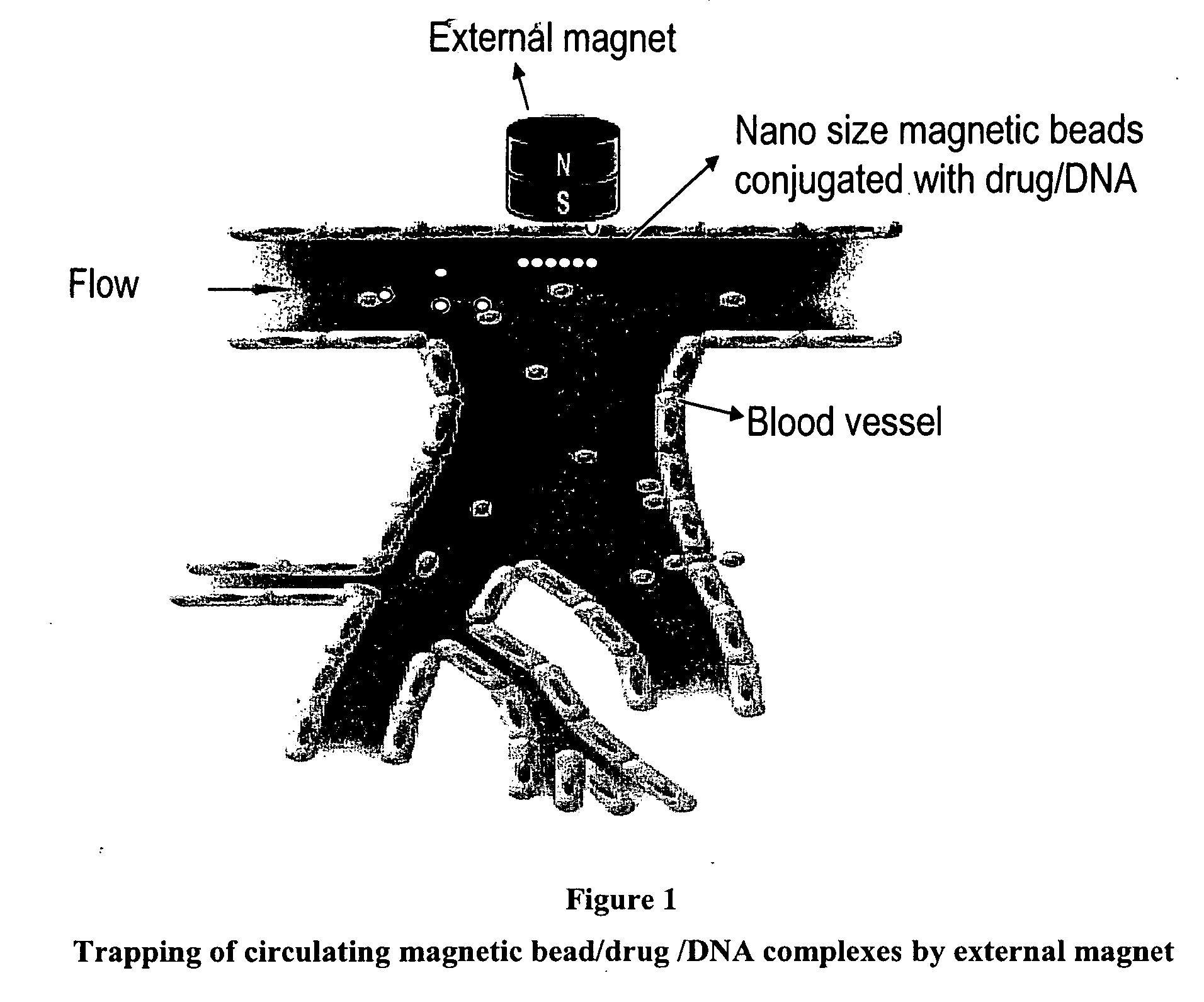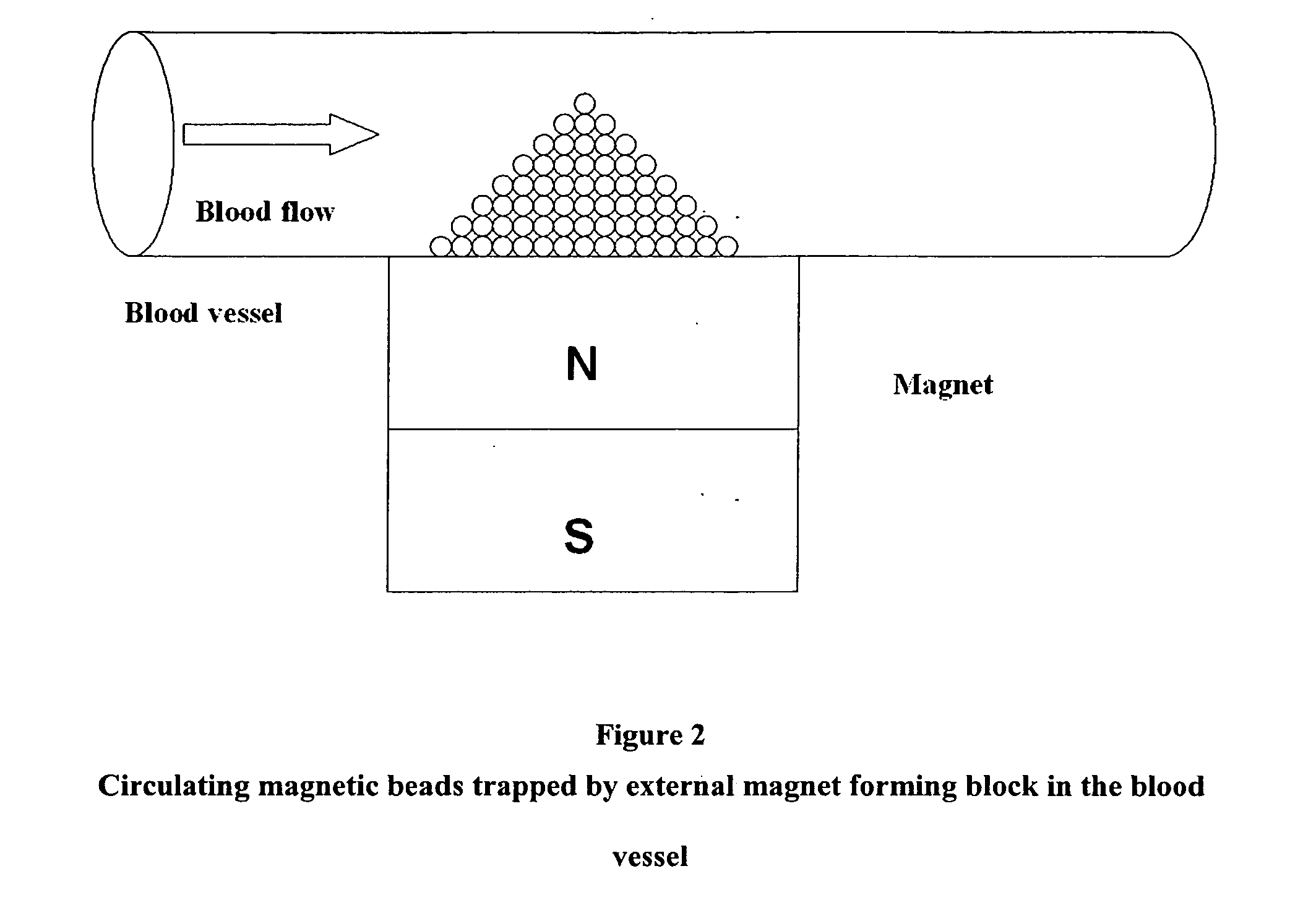Magnetic pole matrices useful for tissue engineering and treatment of disease
a magnetic pole matrice and tissue engineering technology, applied in the field of systematic therapy for cardiovascular disease, can solve the problems of limited application, toxic side effects on non-target organs, depth of target site, etc., and achieve the effect of reducing the aggregation of non-target magnetic nanoparticles, reducing the size of non-target aggregations, and being easy to manufactur
- Summary
- Abstract
- Description
- Claims
- Application Information
AI Technical Summary
Benefits of technology
Problems solved by technology
Method used
Image
Examples
example 1
Magnetic Pole Matrices Fabrication
[0041] A magnetic pole matrix was formed as follows:
[0042] In this example, electron beam lithography and electroplating were used to produce nanoscale pillar arrays. A plating base of 10 nm Ti and 20 nm Au were evaporated on a silicon substrate. The substrate is then spin coated with polymethyl methacrylate (PMMA) positive resist of 950 kD in molecular weight. The final thickness of the PMMA was 200 nm, which determined the maximum height of the pillars. The arrays of small holes were exposed and developed in PMMA resist using electron beam lithography. The resulting structure was used as a template for the sputtering deposition of magnetic pillars. Next, magnetic arrays were made using sputtering and liftoff to deposit magnetic material into the template. In the sputtering process, magnetic film is formed over the photoresist mask. As a result, the thickness of pole matrix layer thus obtained can be determined by the sputtering rate and the spu...
example 2
[0043] Gene therapy in cardiovascular system is mainly limited due to the low transfection efficiency of gene vectors in blood, in which the serum may degrade the vector's ability to deliver genes.
[0044] In this example, the non-viral gene vector poly-ethyleneimine (PEI) was covalently conjugated with magnetic nanobeads and desired gene by Sulfo-NHS-LC-Biotin linker to evaluate the transfection efficiency improvement. The magnetic beads / PEI / DNA complexes were found very stable even in medium with serum. It was found that magnetic beads / PEI / DNA complexes prepared in medium with serum has about 100 fold increasment of transfection efficiency than PEI / DNA complexes in 4 different cell lines tested by luciferase reporter gene as shown in FIG. 6, FIG. 7, FIG. 8 and FIG. 9. By applying three restricted external magnetic fields to 2D cell cultures, LacZ gene transfection (shown in FIG. 10) could be selectively targeted to the specific and localized cell populations...
example 3
[0045] In this example, the non-viral gene vector poly-ethyleneimine (PEI) was covalently conjugated with magnetic nanobeads and reporter gene LacZ by Sulfo-NHS-LC-Biotin linker to evaluate the transfection efficacy in mouse mode. The magnetic beads / PEI / DNA complexes were prepared in medium with serum. The magnetic beads / PEI / DNA complexes with volume 50 ml were injected into the leg muscle of the mouse. LacZ gene expressions were found in the leg muscle after 72 hours injection as shown in FIG. 13. It is demonstrated that the present invention provides a feasible gene / drug delivery strategy for cardiovascular system disease.
PUM
| Property | Measurement | Unit |
|---|---|---|
| length | aaaaa | aaaaa |
| size | aaaaa | aaaaa |
| widths | aaaaa | aaaaa |
Abstract
Description
Claims
Application Information
 Login to View More
Login to View More - R&D
- Intellectual Property
- Life Sciences
- Materials
- Tech Scout
- Unparalleled Data Quality
- Higher Quality Content
- 60% Fewer Hallucinations
Browse by: Latest US Patents, China's latest patents, Technical Efficacy Thesaurus, Application Domain, Technology Topic, Popular Technical Reports.
© 2025 PatSnap. All rights reserved.Legal|Privacy policy|Modern Slavery Act Transparency Statement|Sitemap|About US| Contact US: help@patsnap.com



